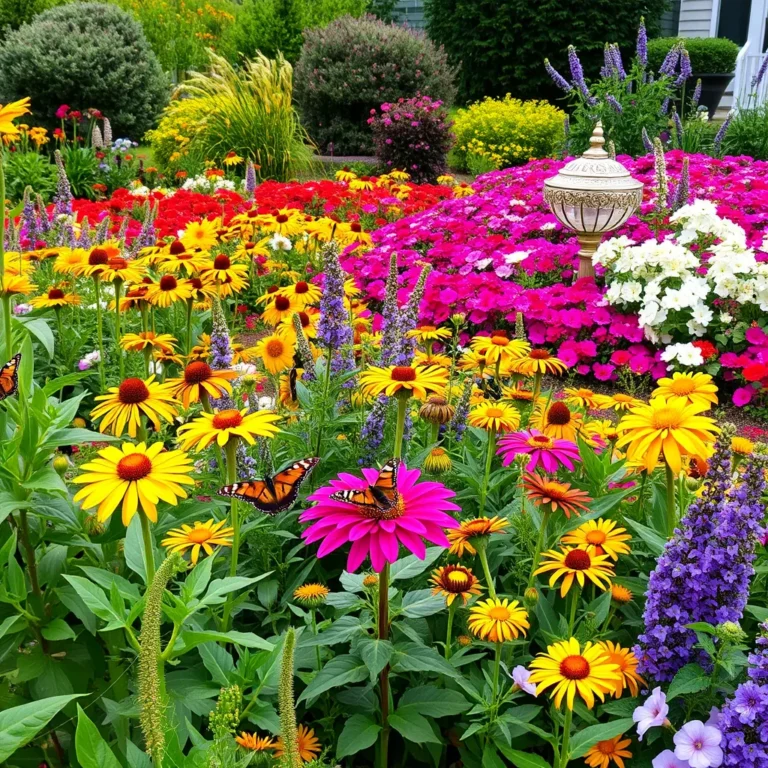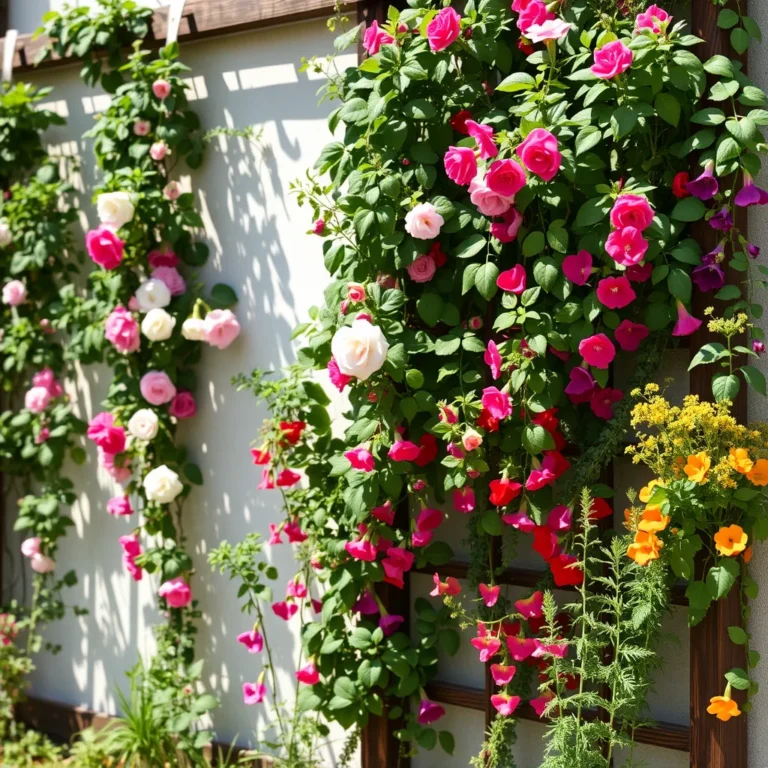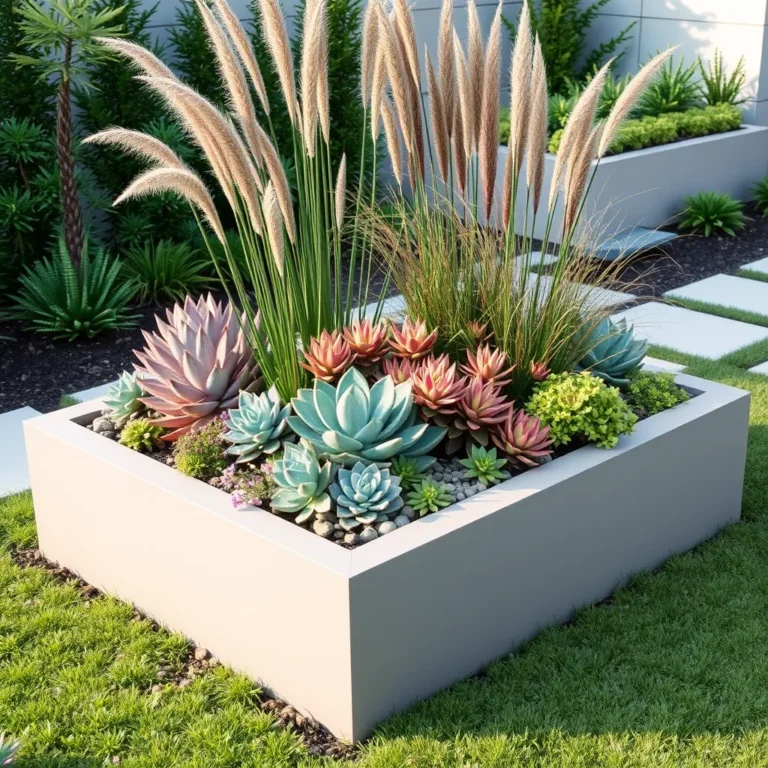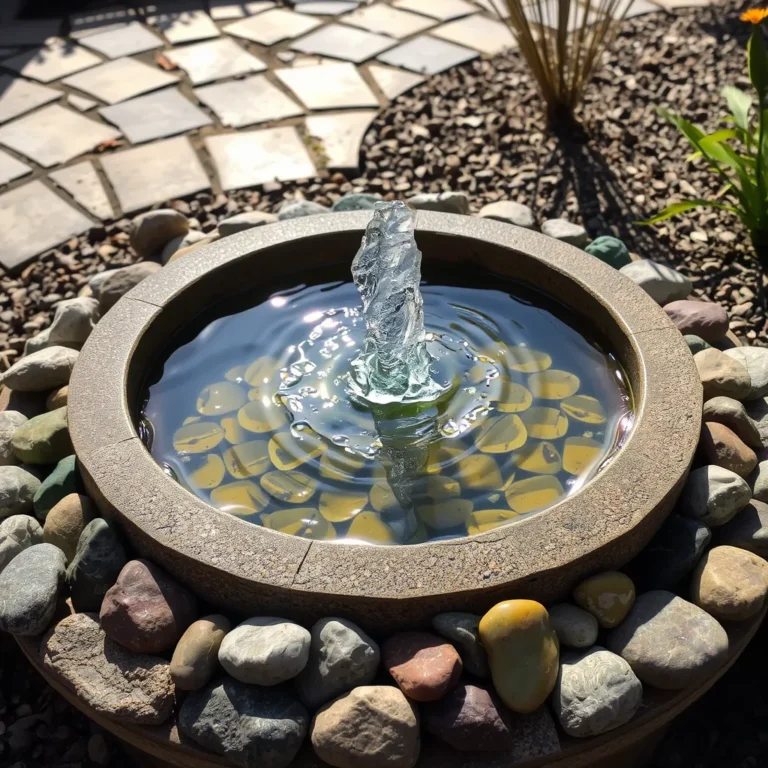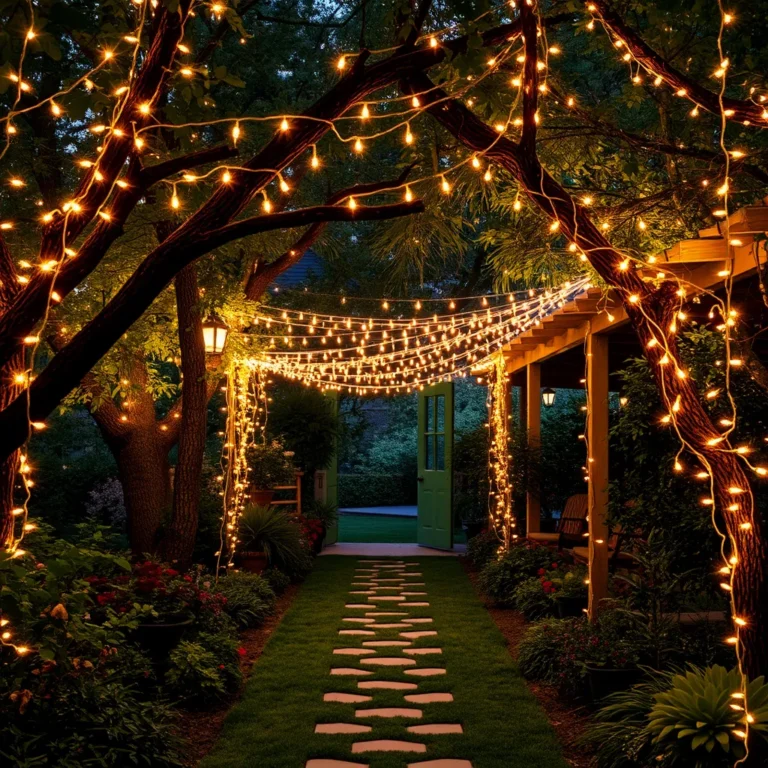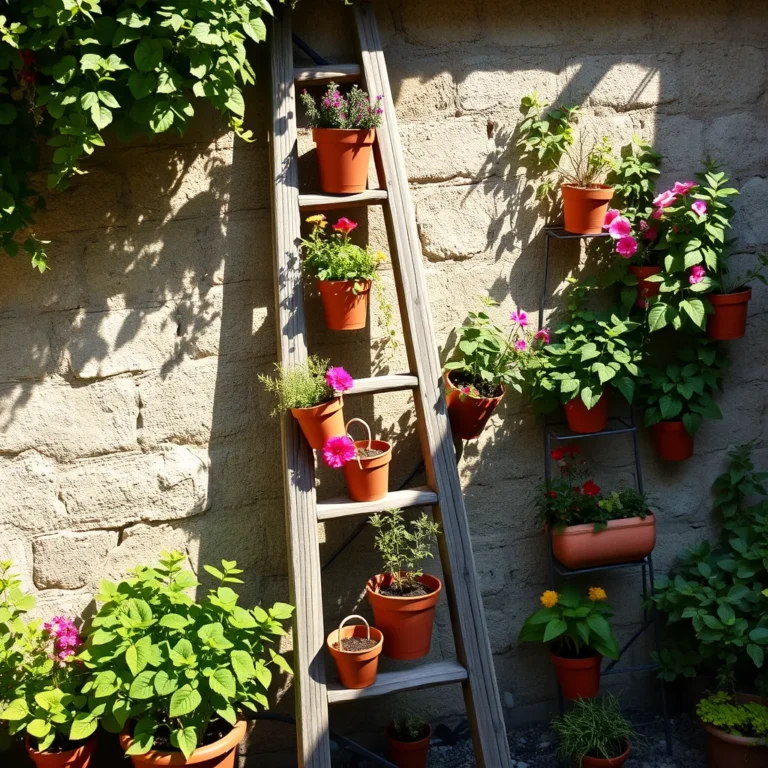10 Creative Small Garden Ideas for Limited Spaces
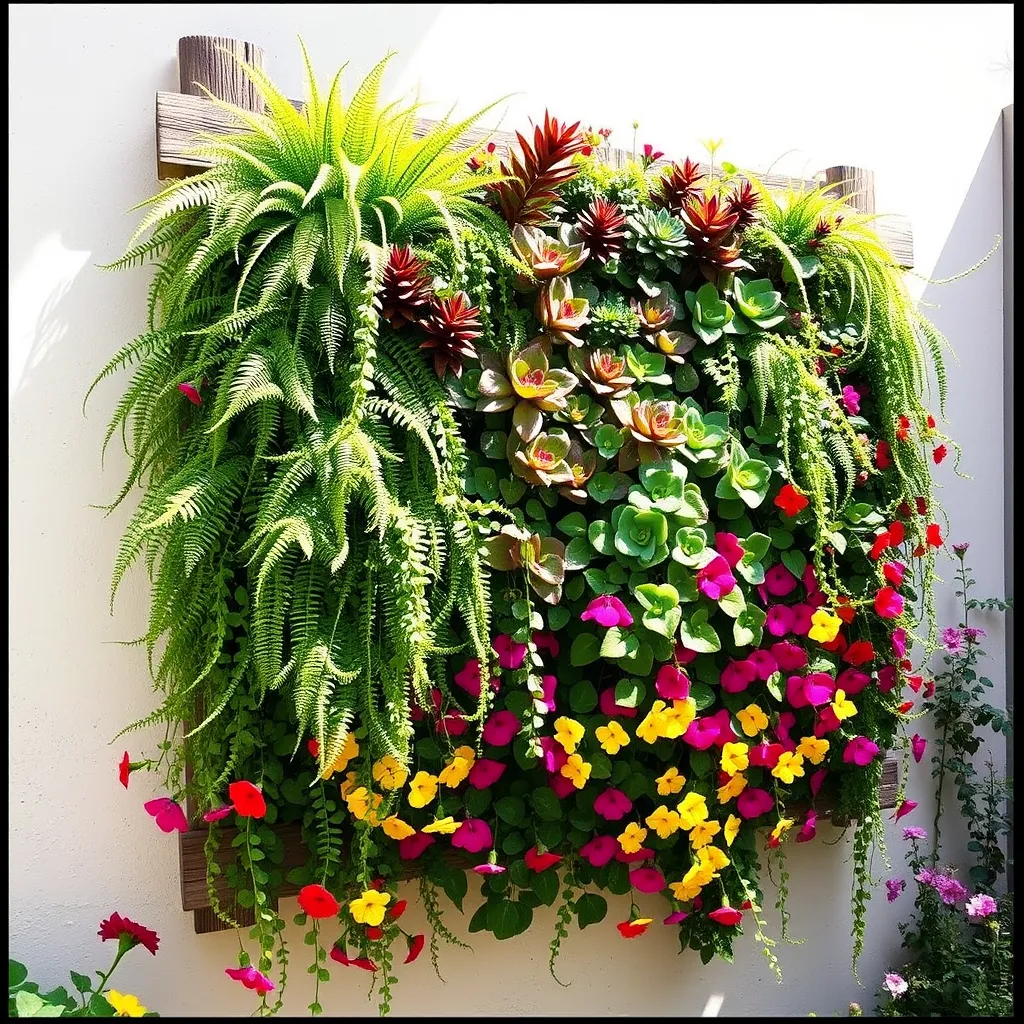
Do you think you lack space for a garden? Think again! I’ll show you ten creative small garden ideas that will transform your tiny area into a lush paradise. From vertical gardens to herb spirals, these tips and tricks will help you cultivate beauty and greenery in any limited space. Let’s dig in and discover how you can make your garden dreams come true, no matter how small your yard may be!
Vertical Gardens: Transforming Walls into Green Spaces

Vertical gardens are a great way to add green to small spaces. They turn your walls into living art. You can grow plants up instead of out, saving ground space. This method helps improve air quality and adds beauty. It also gives you a chance to get creative with your wall designs.
For your vertical garden, consider these plants:
– Ferns
– Succulents
– Herbs like basil and mint
– Flowers such as petunias
To make your own vertical garden, follow these steps:
1. Choose a wall. Pick a spot with good light.
2. Select a structure. You can use a wooden frame or buy a ready-made planter.
3. Pick your plants. Choose plants based on the light and space you have.
4. Add soil. Use good soil that drains well.
5. Plant your greenery. Arrange them in a way that looks nice to you.
6. Water and care. Keep your plants watered and check for pests.
Now you have a beautiful green wall!
Container Gardening: Flexible Solutions for Small Areas

Container gardening is great for small spaces. You can use pots, boxes, or even old cans. Here are some types of containers to consider:
– Terracotta pots
– Wooden crates
– Plastic containers
– Hanging baskets
– Recycled materials
Choosing the right soil is key. Look for potting soil that drains well. Mix in some perlite for extra drainage. Ensure your container has holes at the bottom. This keeps plants healthy and happy.
Arranging containers can add charm to your space. Group pots of different sizes together. Use tall containers to create layers. Place smaller pots on shelves or tables. This makes your garden feel lush, even in tight spots.
With container gardening, you can enjoy a beautiful garden anywhere!
Gardening on a Balcony: Making the Most of Limited Space

When you garden on a balcony, think about sunlight and wind. Most plants need six hours of sun daily. If your balcony gets little sun, choose shade-loving plants. Check the wind too; strong gusts can hurt delicate plants.
For limited spaces, space-saving plants shine. Consider herbs like basil and mint. They grow well in pots and smell great. Choose flowers like marigolds or petunias for color. Small vegetables, like cherry tomatoes, also do well in containers. They are fun to grow and tasty to eat.
Setting up your balcony garden is key. Use vertical planters to save floor space. Hang pots or use shelves to display plants. Group plants by sun needs. This way, all your plants get what they need. Add a small table or chair for a cozy spot to relax. Use colorful pots to brighten your space.
Hanging Gardens: Utilizing Air Space for Foliage

Hanging gardens save space while adding beauty. You can create a lush look even in small areas.
Types of hanging planters and their uses
Hanging planters come in many styles. You can use macramé hangers, wall-mounted pots, or tiered shelves. Each type helps you display plants creatively. Macramé hangers add a boho feel. Wall-mounted pots save floor space. Tiered shelves create a layered garden look.
Ideal plants for hanging gardens
Choose vibrant plants for your hanging garden. Some great options include:
– Spider plants: Hardy and easy to care for.
– Pothos: Trailing vines that grow quickly.
– Ferns: Add a lush, green touch.
– Succulents: Perfect for bright spots and low water needs.
– Herbs: Like basil and mint, they can be useful too.
These plants thrive in hanging situations and add color to your space.
How to hang your garden securely and stylishly
Hanging your garden needs careful planning. Start by picking a safe spot with good light. Use sturdy hooks or brackets to hold your planters. Make sure they can support the weight of the plants and soil.
Consider spacing your plants for good airflow. This helps prevent mold and pests. Lastly, choose colorful pots or unique designs to add style. Your hanging garden can be functional and attractive!
Herb Spiral: A Vertical Garden for Culinary Herbs

An herb spiral is a cool, space-saving garden. It uses vertical space to grow many herbs. The spiral shape helps plants get the right amount of sun and water. This design is easy to fit into small areas.
To build a simple herb spiral, you need a few stones or bricks. Start by making a circle on the ground. Then stack the stones as you move up. The center should be the highest point. Add soil to each level as you go. This gives each herb the right spot to thrive.
When choosing herbs, consider these options:
– Basil
– Thyme
– Rosemary
– Mint
– Oregano
These herbs work well in a spiral garden. They also add great flavors to your meals. An herb spiral not only saves space but also looks good. You can enjoy fresh herbs right from your garden!
Indoor Gardens: Bringing Nature Inside

Indoor gardens let you enjoy plants without needing a big yard. They can boost your mood and air quality. Plus, they are easy to care for in small areas.
The best plants for low-light indoor gardens are:
– Snake plants
– Pothos
– ZZ plants
– Peace lilies
– Spider plants
These plants need little light and are hardy. They thrive even if you forget to water them sometimes.
To set up your indoor garden, think about these creative ideas:
1. Use shelves: Place plants on shelves to save floor space. You can create layers and add visual interest.
2. Hang pots: Use hooks or wall-mounted planters. This keeps your floor clear while showing off your plants.
3. Window sills: Make use of sunny window sills. Place small pots here for easy access and bright light.
4. Terrariums: Create a small ecosystem in a glass container. This is a fun way to display plants and requires little space.
With these tips, you can create a lovely indoor garden. Enjoy the benefits of nature from the comfort of your home.
Window Box Gardens: Maximizing Natural Light

Where should I place my window boxes?
Look for spots that get good sunlight. South-facing windows are best. You can also use your balcony or porch railings. Make sure the boxes do not block any light inside.
What plants should I choose for window box gardening?
Pick plants that thrive in small spaces. Herbs like basil and parsley work well. Flowers like petunias and geraniums add color. Choose trailing plants, such as ivy, for a nice look. Mix different types for a vibrant display.
How can I keep my window box gardens healthy?
Water your plants regularly, but do not overdo it. Check the soil; it should be moist but not soggy. Remove dead leaves to keep your box tidy. Fertilize every few weeks to help plants grow strong.
Miniature Zen Gardens: A Peaceful Retreat in Small Spaces

Miniature zen gardens offer calm in tight spots. They create a peaceful vibe with simple elements. You can design one to fit any small area.
Features of a miniature zen garden
A miniature zen garden usually has sand or gravel. This represents water and helps with relaxation. Rocks add shape and texture. Small plants or moss can bring life and color. The garden often includes a rake to make patterns in the sand. This lets you express creativity.
Materials required to create a zen garden
To make your zen garden, gather these materials:
– A shallow container or tray
– Sand or fine gravel
– Small stones or pebbles
– A rake or stick
– Optional: small plants or moss
Step-by-step guide to designing your own zen space
1. Choose a container: Pick a shallow tray or box. Make sure it fits your space.
2. Add sand: Pour sand or gravel into the container. Spread it evenly.
3. Arrange stones: Place your stones in a pleasing design. Think about balance and flow.
4. Create patterns: Use the rake to make lines in the sand. You can try circles or waves.
5. Add plants: If you want, place small plants or moss in the garden. They can add color.
6. Personalize: Feel free to add small figurines or decorations. This makes it yours.
Enjoy your miniature zen garden as a spot to relax and reflect!
Use of Vertical Trellises: Encouraging Growth Upward

Vertical trellises help you grow plants upwards. This saves space. You can fit more plants in a small area.
Types of trellises that work well for small gardens
For small gardens, choose light and strong trellises. Some good types include:
– Wooden trellises: Easy to build and customize.
– Metal trellises: Strong and durable.
– Wire trellises: Great for climbing plants and easy to install.
– Freestanding trellises: Good for corners or open spaces.
Climbing plants suitable for trellises
Many climbing plants thrive on trellises. Here are some favorites:
– Peas: Fast-growing and edible.
– Cucumbers: Perfect for small gardens and tasty.
– Beans: Easy to grow and nutritious.
– Morning glories: Beautiful flowers that attract birds.
How to install and maintain trellises effectively
Start by choosing a good spot for your trellis. Make sure it gets sunlight. Here are steps to install your trellis:
1. Dig holes: Make holes for the base of the trellis.
2. Add support: Use stakes or screws to keep it stable.
3. Plant your climbing plants: Place them at the base of the trellis.
4. Train the plants: Gently guide them to climb the trellis.
Check your trellis every month. Make sure it’s sturdy and clean. Trim any dead leaves. This keeps your plants healthy and happy.
Edible Landscaping: Combining Aesthetics with Functionality

Edible landscaping mixes beauty with food. You can grow plants that look good and taste great. Here are some examples:
– Strawberries: They bloom bright red and make tasty snacks.
– Herbs: Basil and mint add flavor and scent. Plus, they look lovely.
– Edible Flowers: Nasturtiums and pansies are colorful and safe to eat.
To add edible plants to your garden, think about these tips:
– Plan Your Space: Choose spots that get sun but also look nice.
– Mix Plants: Pair edibles with flowers for a vibrant look.
– Use Borders: Create borders with herbs to add scent and style.
Caring for your edible garden is easy. Here are some maintenance tips:
– Water Regularly: Plants need water, especially in hot months.
– Check for Pests: Look for bugs and remove them by hand.
– Use Compost: Add compost to keep your soil rich in nutrients.
With edible landscaping, you enjoy a garden that feeds the eyes and the stomach.
Conclusion
Vertical gardens and container gardening offer great ways to grow plants in small spaces. You can create a lush vertical garden or a charming balcony setup, even if you have limited room. With creative ideas like hanging gardens and herb spirals, every inch of your space can house greenery. Remember, even indoor gardens can bring nature inside and thrive with low-light plants. These gardening methods not only beautify your home but can also provide fresh herbs and vegetables. Embrace these ideas and transform your space into a green haven for your enjoyment.

